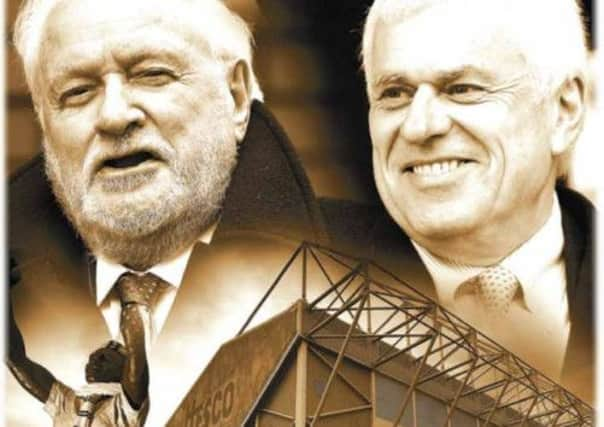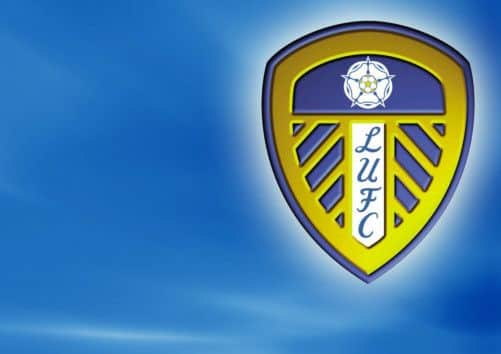From own goals to genuine highs, the parallel fortunes of Leeds Utd and its city


THE PAST is the past – that’s the slogan adopted by Leeds United’s recently-installed owners as they try to make a break with the difficult times the club has endured in the last few years.
But it’s not just United who appear to be upwardly-mobile again, their home city is also back flexing its muscles after a tricky period ushered in by the credit crunch.
Advertisement
Hide AdAdvertisement
Hide AdThe £350m Trinity Leeds – the only major shopping centre to open its doors in this UK this year – welcomed its first customers in March, with the £60m First Direct Arena following suit last month with a sell-out performance by Bruce Springsteen.


This isn’t the first occasion, however, that the fortunes of club and city have, for whatever reason, mirrored one other.
The reigns of Manny Cussins, Leslie Silver, Peter Ridsdale and Ken Bates as United chairman all allow, in their various ups and downs, parallels to be drawn with what was happening in the wider Leeds community.
Cussins, the head of Leeds-based furniture chain John Peters, began his chairmanship at Elland Road in 1972 with the club at the peak of its powers under legendary manager Don Revie.
Advertisement
Hide AdAdvertisement
Hide AdThe Whites had lifted the FA Cup for the first time in their history only 10 days before having beaten Arsenal 1-0 at Wembley and further glory was just around the corner, with Revie leading his troops to the First Division title in 1974.
“The Don” had overseen a transformation of a one-time footballing also-ran that was matched by changes unfolding on the streets of Leeds.
Stage three of the inner ring road was completed in 1974 and the scheme, coupled with the M1, M62 and A1, saw Leeds styling itself as the “motorway city of the 70s”.
There were other ambitious construction projects such as West Riding House, the Albion Street office block that would keep its crown as the tallest building in Leeds until 2007. Like the Leeds International Pool, designed in the 1960s by soon-to-be disgraced Pontefract architect John Poulson, West Riding House wasn’t easy on the eye.
Advertisement
Hide AdAdvertisement
Hide AdBrutal and unforgiving, some said – and similar criticism was levelled at Revie’s Leeds side by a London-centric press.
By the time Leslie Silver succeeded Cussins as chairman in 1983, however, the swagger exhibited by Leeds the club and Leeds the city during the previous decade was long gone.
United were skint and in the Second Division, just as Leeds itself was feeling the shattering financial and social effects of soaring unemployment and the break-up of traditional manufacturing and mining industries.
Silver faced calls to resign in 1985 after Revie-era playing hero Eddie Gray was sacked as manager. But the east London-born chairman, much like the city that had become his adopted home, would not be going away without a fight.
Advertisement
Hide AdAdvertisement
Hide AdHe had built a multi-million pound paint company after starting up with a £250 gratuity on leaving the RAF in 1947. And Silver eventually worked similar magic at Leeds, with his appointment of Howard Wilkinson as manager in 1988 kicking off a dizzying climb that led to the First Division title for United just four years later.
Football, though, was undergoing a revolution. In Dave Simpson’s book The Last Champions, Silver tells the author: “My predecessor Manny Cussins said, ‘One word of advice. No footballer in the world is worth £300 a week’.
“Within two years [of the Premiership starting in 1992] we were paying £20,000 a week.”
The city of Leeds, too, was going through a reinvention. Between 1988 and 1995, a Government-backed quango called the Leeds Development Corporation acted as the planning authority for part of the city centre.
Advertisement
Hide AdAdvertisement
Hide AdIt offered grants encouraging developers to invest in the neglected waterfront of the River Aire – and there was no shortage of takers. The Calls, to pick just one example, began its revival from “grubby blot” on the landscape into the vibrant setting for flats, offices, restaurants and bars that Leeds knows today.
Confirmation that the city was back in business came in 1991, when it was chosen as the new home of the Royal Armouries – the United Kingdom’s national collection of arms and armour.
The £42.5m museum at Clarence Dock – another revitalised riverside site – was opened by the Queen in 1996.
That same year witnessed the opening of upmarket department store Harvey Nichols in the city centre’s booming Victoria Quarter, soon to be tagged the “Knightsbridge of the North”.
Advertisement
Hide AdAdvertisement
Hide AdBy 1997, plans were unveiled for Leeds’s first £1m flat, a penthouse home in a redeveloped warehouse on Dock Street. “Bar culture” was also all the rage, with local favourites such as Art’s Cafe and Cafe Inseine featuring in guidebooks alongside chic destinations in cities such as Paris, Prague and Madrid.
Author and restaurateur Roy Ackerman described the 1990s in Leeds as a “period of real urban renaissance, with major explosions on the bar, café and club scenes”.
And nowhere was the trendy image of Leeds at the end of the 20th-century better exemplified than at Elland Road.
Money was flowing into a club buoyed by the success of young manager David O’Leary and publicity-savvy chairman Peter Ridsdale.
Advertisement
Hide AdAdvertisement
Hide AdRidsdale, a lifelong Leeds fan and former Burtons managing director, had been appointed in 1997 and within three years was appearing as a guest on the BBC’s Question Time programme and heading up the Education Leeds organisation.
At the same time, corporate giants such as Nike and Strongbow were paying millions for involvement with a team that was packed with rising stars. Their investment seemed certain to pay dividends.
Leeds made it to the semi-finals of the Champions League in 2001 and the sky seemed the limit.
There was even talk of a move from Elland Road to a purpose-built ground off the A1(M) near Stourton.
Advertisement
Hide AdAdvertisement
Hide AdOn-field setbacks and off-field financial headaches were to follow, however, and by the end of 2003 Ridsdale – the man who said big-spending Leeds had “lived the dream” – had quit as chairman.
Two years down the line and there was a new man in charge, the combative former Chelsea supremo Ken Bates.
United, already relegated from the top flight, then fell to their lowest ebb with relegation to the third tier of English football in 2007.
Given what had gone before, it was perhaps no surprise that, just as the club languished in the doldrums, so the city of Leeds was suffering the biting impact of the credit crunch.
Advertisement
Hide AdAdvertisement
Hide AdOne by one, major construction schemes were put on hold or axed.
Victims included the Lumiere skyscrapers development on Wellington Street, the “kissing towers” proposed for Sovereign Street and a residential project called the Spiracle that was due to take the place of John Poulson’s old Leeds International Pool.
Earlier this month, though, tycoon Steve Parkin revealed plans for a £50m office building on the derelict Lumiere site.
That announcement, as we have seen, came hot on the heels of the opening of Trinity Leeds and the city’s concert arena.
Over at Elland Road, meanwhile, new chairman Salah Nooruddin has watched Leeds make an impressive and unbeaten start to the season. Coincidence? Perhaps not...